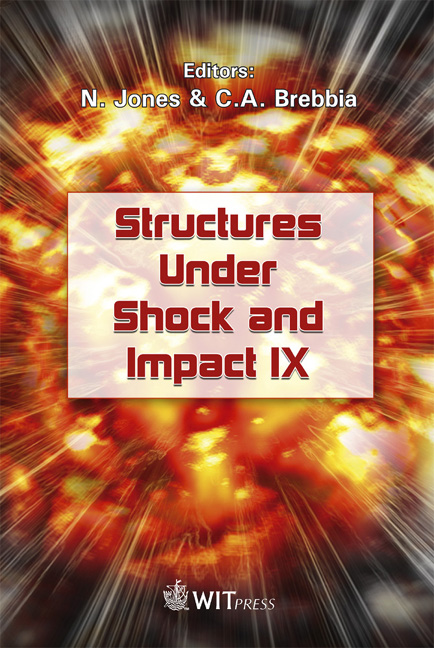Energy Absorption Of Safety Nets In Building Construction
Price
Free (open access)
Transaction
Volume
87
Pages
9
Published
2006
Size
309 kb
Paper DOI
10.2495/SU060411
Copyright
WIT Press
Author(s)
E. G. Segovia Eulogio & R. Irles Más
Abstract
Safety nets used in buildings under construction in Europe are examples of structures under impact. It would be of great interest to evaluate the energy absorbed by the elements making up these devices (nets and supports) in order to improve them and quantify injuries to victims of falls. Experimental tests on type \“V” safety nets (EN 1263-1, 1997) were numerically modelled in this work (consisting of dropping a 100 kg weight from 7 m above the nets). The model is dynamic and highly non-linear (variable contact, geometric and material nonlinearities). Two adjustment parameters were used to calibrate the numerical model: the equivalent elastic modulus of the net and the equivalent structural damping of the net. A value for each one was found, thus obtaining the same weight drop and maximum strain on the gauges in the experimental tests. The main conclusion, when numerical simulations were carried out using the calibrated model, is the great difference between the energy absorbed by the net and by the supports (ratio: 8-1). This means that, with research into net materials focusing on this impact problem, absorbed energy is an important factor. Keywords: safety nets, building under construction, structure under impact, absorbed energy, numerical model. 1 Introduction In the second half of the 20th century, different safety net systems for buildings under construction were developed in several countries to prevent falls with the consequent risk of serious injury or death. With the vertical safety net system, practically exclusive to Spain, there have been several accidents involving death or serious injury that have led to them being improved (Saiz et al. [1]).
Keywords
safety nets, building under construction, structure under impact, absorbed energy, numerical model.





